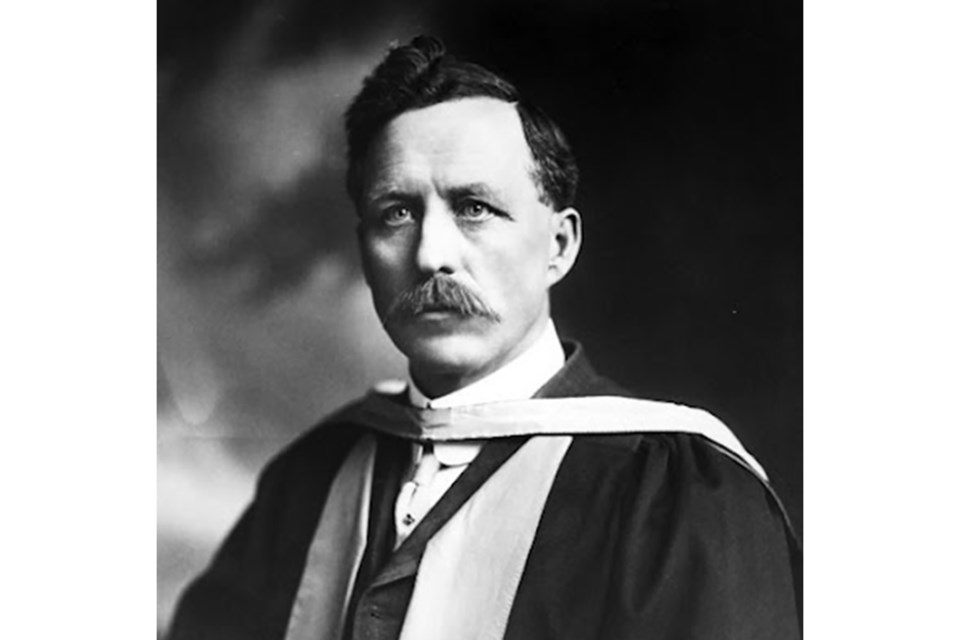LAKELAND – For a century, the province of Alberta has supported research and innovative technologies in several sectors including resource extraction, agriculture, the field of medicine and now, more than ever before, sustainable and clean technology through the province’s crown corporation Alberta Innovates.
Falling under different names and taking on different forms over the last one hundred years, Alberta Innovates owes its existence to the efforts of Henry Marshall Tory, the first president of the University of Alberta.
Tory promoted the idea that publicly funded scientific research could play a vital role in promoting industrial development. His lobbying of Alberta’s government led to the creation of the Scientific and Industrial Research Council of Alberta (SIRCA) in 1921.
As a result, Alberta was the first province to implement a collaborative model between academia, industry and government in the country. Other provinces would eventually form similar councils.
When SIRCA first formed, its mandate was to support economic development through scientific and engineering expertise – supporting industries in developing new research, mapping out Alberta’s geological resources and discovering new commercial uses for materials and goods Alberta produced.
Discoveries made with the support of SIRCA, which had undergone a name change to the Research Council of Alberta in 1930, eventually resulted in a greater understanding and practical utilization of Alberta’s bituminous sands in 1944, according to an Alberta Tourism and Culture article on Tory’s legacy.
Commercialization of the oil sands, however, did not occur until 1967, 20 years after Tory’s passing.
Today, the modern version of SIRCA continues to bring government, industry, research and innovation together under the umbrella of Alberta Innovates.
Alberta Innovates
Alberta Innovates focuses on innovative technology, job creation, diversification of the economy, while pursuing cleaner and more sustainable environmental practices, explains Justin Brattinga, the press secretary for the ministry of Jobs, Economy and Innovation, during a phone interview with Lakeland This Week.
"The goal of (Alberta Innovates) is to reduce the emissions that industries in Alberta are putting out, and Alberta Innovates is often one of the early investors, or one of the first places, that companies can turn to for assistance, whether it's business development, helping them write a grant proposal or actually investing in the programs,” Brattinga says.
After folding four branches of Alberta Innovates (AI) – AI Technology Futures, AI Health Solutions, AI Energy and Environment Solutions, and AI Bio Solutions – into one in 2016, the crown corporation covers a wide scope of projects that are looking to get new ideas and business models off the ground.
“We sort of centralized all of it… which covers clean tech, but also, they do a lot of healthcare research and innovation, agriculture technology, and research of artificial intelligence,” he says, adding that reducing emission intensity is a large part of the program’s efforts.
“A lot of our industries, whether it's agriculture, helping livestock and farming operations reduce their emissions, but particularly in the energy sector, whether it's oil and gas for extraction or processing... helping them find other ways to use their material and also helping them to do things like use less water,” is a large component, he says.
In order to support these advances, the Minister of Jobs, Economy and Innovation, Jason Schweitzer announced that $50-million has been committed to 23 Alberta Innovates projects to be dispersed over the next three years through the province’s Technology Innovation and Emission Reduction (TIER) program, during a press conference on Oct. 27.
Province’s carbon levy reinvested into innovation
The TIER program is the UCP’s version of the previous government’s carbon tax, the Carbon Competitiveness Incentive Regulation (CCIR), which was repealed when the UCP government took office.
The TIER program continues to put a price on carbon for the roughly 120 top carbon emitters in the province.
"It covers about 60 per cent of Alberta's emissions, so any industry that contributes to emissions in a sort of heavy fashion pays into the TIER program, and then that money is distributed in a way that reduces the greenhouse gas emissions of the province,” says Brattinga. “So basically, there's a certain threshold and then once you emit more than that threshold as a facility or a project, you then have to pay into TIER... it was brought in after we repealed the carbon tax.”
So far, the province has committed $750 million from the TIER fund to other projects. Brattinga states the number is close to the amount the program has collected overall.
"We are reinvesting it all back, both as a way to reduce emissions obviously, but also to create jobs... It's not just going into the government's bank account and then being used for whatever you want. (The) money goes specifically to technology, innovation and emissions reduction.”
To meet the guidelines of TIER’s funding model, Alberta Innovates projects have to meet three stipulations Brattinga explains.
“One of the criteria was how much emissions it will reduce... and also how it would do that. The other two criteria were: how ready to go it was, whether it was ready to be built or shovel ready, as it were; and then how many jobs it would create.”
Although none of the 23 projects that were funded by the TEIR program were directly connected to the Lakeland area, an eILF tailings treatment pilot project by Imperial Oil Ltd. will receive $750,000 worth of funding that could potentially benefit the company’s operations in the Lakeland region.
Brattinga notes that Alberta Innovates covers a variety of industries, and that entrepreneurs and business owners from across the province and in the Lakeland have the opportunity to work with Alberta Innovates to advance technology.
These industry fields include health, emerging technology, environment and climate change, natural science and engineering, Bioindustrial, data, clean tech, COVID-19, forestry and food, clean resources, and agriculture.



